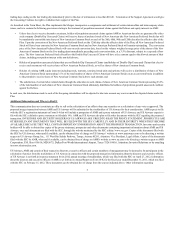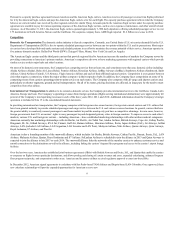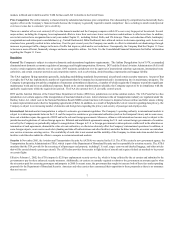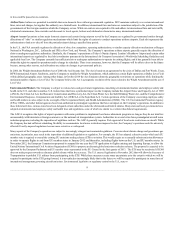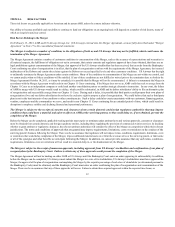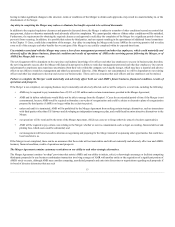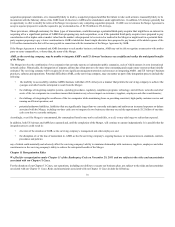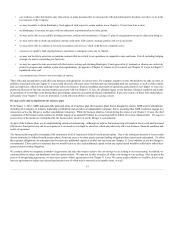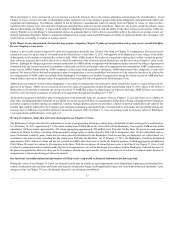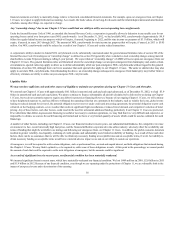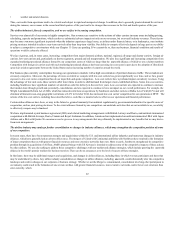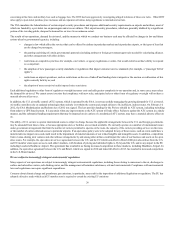American Airlines 2012 Annual Report Download - page 14
Download and view the complete annual report
Please find page 14 of the 2012 American Airlines annual report below. You can navigate through the pages in the report by either clicking on the pages listed below, or by using the keyword search tool below to find specific information within the annual report.
acquisition proposal constitutes, or is reasonably likely to lead to, a superior proposal and that the failure to take such action is reasonably likely to be
inconsistent with the fiduciary duties of the AMR board of directors to AMR and its stakeholders under applicable law. In addition, US Airways generally has
an opportunity to offer to modify the terms of the Merger in response to any competing acquisition proposal. If AMR were to terminate the Merger Agreement to
accept a superior proposal, it would be required to pay a termination fee of $135 million to US Airways.
These provisions, although customary for these types of transactions, could discourage a potential third-party acquiror that might have an interest in
acquiring all or a significant portion of AMR from proposing any such acquisition, even if the potential third-party acquiror were prepared to pay
consideration with a higher cash or market value than the market value proposed to be received or realized in the Merger or might result in a potential third-
party acquiror proposing to pay a lower consideration to AMR's stakeholders than it might otherwise have proposed to pay because of the added expense of the
$135 million termination fee that will become payable in connection with the termination of the Merger Agreement by AMR.
If the Merger Agreement is terminated and AMR determines to seek another business combination, AMR may not be able to negotiate a transaction with another
party on terms comparable to, or better than, the terms of the Merger.
AMR, as the surviving company, may be unable to integrate AMR's and US Airways' businesses successfully and realize the anticipated benefits
of the Merger.
The Merger involves the combination of two companies that currently operate as independent public companies, each of which operates its own international
network airline. Historically, the integration of separate airlines has often proven to be more time consuming and require more resources than initially
estimated. The surviving company will be required to devote significant management attention and resources to integrating AMR's and US Airways' business
practices, cultures and operations. Potential difficulties AMR, as the surviving company, may encounter as part of the integration process include the
following:
• the inability to successfully combine AMR's business with that of US Airways in a manner that permits the surviving company to achieve the
synergies and other benefits anticipated to result from the Merger;
•the challenge of integrating complex systems, operating procedures, regulatory compliance programs, technology, aircraft fleets, networks and other
assets of the two companies in a seamless manner that minimizes any adverse impact on customers, suppliers, employees and other constituencies;
•the challenge of integrating the workforces of the two companies while maintaining focus on providing consistent, high quality customer service and
running an efficient operation; and
•potential unknown liabilities, liabilities that are significantly larger than we currently anticipate and unforeseen increased expenses or delays
associated with the Merger, including one-time cash costs to integrate the two businesses that may exceed the approximately $1.2 billion of one-time
cash costs that we currently anticipate.
Accordingly, even if the Merger is consummated, the contemplated benefits may not be realized fully, or at all, or may take longer to realize than expected.
In addition, both US Airways and AMR have operated and, until the completion of the Merger, will continue to operate independently. It is possible that the
integration process could result in:
•diversion of the attention of AMR, as the surviving company's, management and other employees; and
•the disruption of, or the loss of momentum in, AMR, as the the surviving company's, ongoing business or inconsistencies in standards, controls,
procedures and policies,
any of which could materially and adversely affect the surviving company's ability to maintain relationships with customers, suppliers, employees and other
constituencies or the surviving company's ability to achieve the anticipated benefits of the Merger.
Chapter 11 Reorganization Risks
We filed for reorganization under Chapter 11 of the Bankruptcy Code on November 29, 2011 and are subject to the risks and uncertainties
associated with our Chapter 11 Cases.
For the duration of our Chapter 11 Cases, our operations, including our ability to execute our business plan, are subject to the risks and uncertainties
associated with our Chapter 11 Cases. Risks and uncertainties associated with our Chapter 11 Cases include the following:
14


